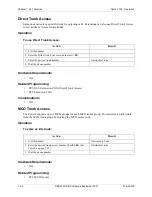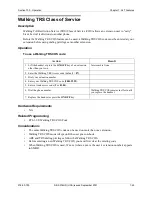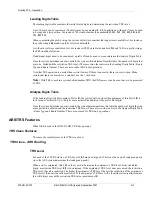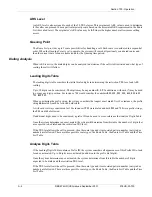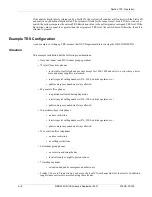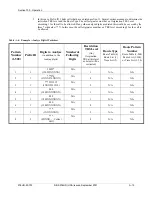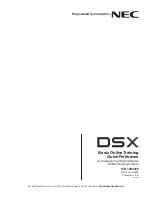
Section 700 - Operation
576HD-50-700
DBS 576HD (USA) issued September 2001
A-1
Appendix A. ARS and TRS Operation
Introduction
This appendix provides an overview of the Toll Restriction Service (TRS) and Automatic
Route Selection (ARS) features that are available with the DBS 576HD PBX.
• TRS provides the ability to block selected outgoing calls while allowing others.
• ARS automatically finds the lowest cost way to send out a call. This feature is
sometimes called Least Cost Routing (LCR).
With the DBS 576HD system, it is possible to utilize TRS without ARS (called TRS) or to
utilize both TRS and ARS together (called ARS/TRS or simply ARS).
Once TRS is set up, it is automatic. Whenever a call is originated, the TRS tables are checked
to see if the call is restricted or not. This restriction is based on the originator and the number
dialed. Separate TRS classes are assigned for Day mode and Night mode.
ARS operates when ARS is enabled and the caller dials the first MCO Access Number
(usually
9
). Direct trunk access and the second to fifth MCO Access numbers (usually
81
to
84
) do not utilize ARS.
ARS use may be required based on the extension originating the call. This is enabled by the
Forced ARS extension setting.
The ARS feature is exceptionally flexible, depending on the implementation plan. Call
routing can consider the day of the year, day of the week, time of day, the originating
extension or trunk and the number dialed. If the preferred route is busy, up to 4 additional
routes can be considered. When all trunks in a call route are busy, the call can optionally be
queued to continue trying all trunks while moving to the additional routes.
Once the trunk group is selected, prefix digits can be deleted and digits added. In addition,
digits can be added as a suffix.
A high cost toll call warning can also be issued before connecting to a high cost trunk, giving
the caller an opportunity to terminate the call attempt before a higher cost connection is
established.
Both TRS and ARS/TRS utilize various tables that are linked together. These tables together
determine the TRS and ARS/TRS operation. Data must be collected determining the
customer’s needs, requirements and facilities. Then the data must be analyzed to organize a
TRS or ARS plan. This plan must then be implemented using the appropriate TRS or ARS/
TRS tables.










